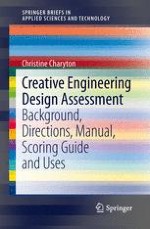
2014 | OriginalPaper | Buchkapitel
1. An Overview of the Relevance of Creative Engineering Design: Background
verfasst von : Christine Charyton
Erschienen in: Creative Engineering Design Assessment
Verlag: Springer London
Aktivieren Sie unsere intelligente Suche, um passende Fachinhalte oder Patente zu finden.
Wählen Sie Textabschnitte aus um mit Künstlicher Intelligenz passenden Patente zu finden. powered by
Markieren Sie Textabschnitte, um KI-gestützt weitere passende Inhalte zu finden. powered by